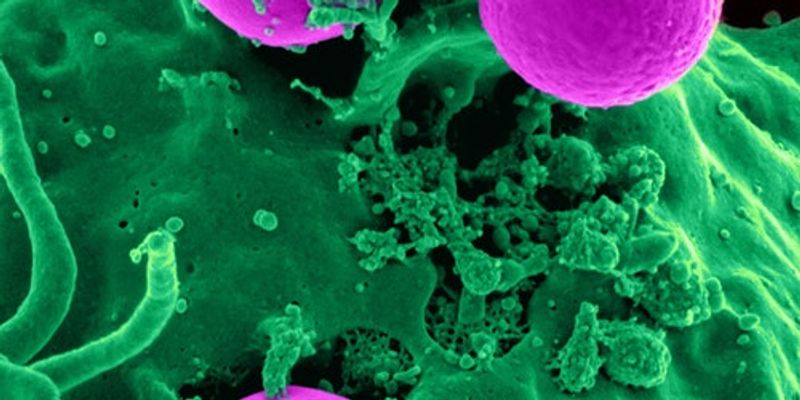Cell
Cell: is the smallest structural and functional unit of an organism, typically microscopic and consisting of cytoplasm and a nucleus enclosed in a membrane. Microscopic organisms typically consist of a single cell, which is either eukaryotic or prokaryotic.
-
The ability to discern spatial gene expression differences in complex biological systems is critical to our understanding of developmental biology and the progression of disease. However, the...
Early detection is critical for improved survival in melanoma. Melanocytic nevi are extremely common benign tumors that mimic melanoma and are therefore commonly biopsied. Currently, the dete...
Speaker:
Margaret Hoang, PhD
, Maija Kiuru, PhD
Presented at: Cell Biology Virtual Event Series 2019
The innate immune response requires continuous surveillance of the environment, and the ability to detect and react to pathogens and danger signals. Phagocytosis –the ingestion of parti...
Neuroinflammation has been implicated as a factor in alcohol-induced neurodegeneration, but the role of the neuroimmune system in alcohol consumption has only recently come to the forefront....
Spatial transcriptomics methods permit gene expression from focal areas within a tissue to be profiled while maintaining the morphologic context of the tissue microenvironment. This presentat...
SEP 25, 2019 | 8:00 AM
DATE: September 25, 2019TIME: 8:00am PT, 11:00am ET This talk will focus on strategies for optimizing expression levels of membrane proteins using the Gibco™ Expi293™ and ExpiCHO™ Expres...
SEP 24, 2019 | 10:00 AM
DATE: September 24, 2019TIME: 10:00AM PDTRegenerative medicine has become a key focus worldwide and the number of stem cell-based clinical trials are rapidly increasing every year. Yet,...
SEP 24, 2019 | 9:00 AM
DATE: September 24, 2019TIME: 9:00am PDTThis webinar will cover the basics of the Milo Single-Cell Western blot (SCW) and RNAScope single-molecule fluorescence RNA In situ hybridizati...
SEP 24, 2019 | 8:00 AM
DATE: September 24, 2019TIME: 7:00am PDTHigh throughput screening (HTS) is an effective method for identifying putative active compounds for therapeutics. Assays that evaluate changes i...
Speaker:
Dr. Adyary Fallarero, Ph.D. Adjunct Professor/Docent in Pharmaceutical Biology
, Dr. Leticia Montoya, Ph.D., Chemistry and Biochemistry
Sponsored By: Thermo Fisher Scientific
The emergence and spread of antimicrobial-resistant (AMR) bacteria and resistance mechanisms pose a serious challenge to laboratories in both hospital clinical microbiology and public health...
Speaker:
Jonathan Jacobs, PhD
Meningitis is an infection of the meninges, the membranes that surround the brain and spinal cord. Encephalitis is inflammation of the brain itself. Anyone can get meningitis or encephalitis...
Speaker:
Kevin Alby, PhD, D(ABMM)
SEP 12, 2019 | 8:00 AM
DATE: September 12, 2019TIME: 8:00am PDTIn the upcoming era of personalized medicine, there is a growing need for the development of rapid, sensitive, precise and accurate analysis of t...
With humans pushing to live further off Earth for longer periods of time, it is increasingly important to understand the changes that occur in biological systems during spaceflight whether th...
Speaker:
Jonathan Galazka, PhD
, Daniela Bezdan, PhD
, Peng Jiang, PhD
Presented at: Microbiology & Immunology Virtual Event Series 2019
























